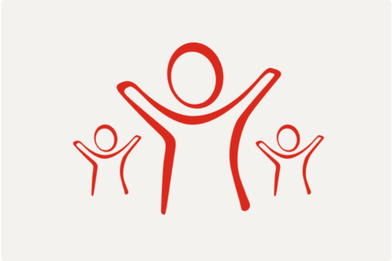Fresh attacks on cities show no safe place for children in Ukraine
Lviv, Monday 18 April – Recent aerial attacks on cities across Ukraine show there is no safe place in the country for children, Save the Children said today. It is now more urgent than ever that parties to the conflict agree to an immediate cessation of hostilities, as the best way to protect children from violence, the child rights organisation said.
Seven civilians were reportedly killed, and eight injured, including a child, in airstrikes in L’viv this morning. Meanwhile in Kyiv, which has seen relative quiet over the past few weeks, there have been fresh airstrikes over the weekend, leading to the mayor of the city advising residents who fled the capital earlier in the escalation of the conflict not to return.
We stand side by side with children in the world's toughest places.
Conflict is surging in the east of Ukraine, with reports of further deaths from airstrikes in Kharkiv yesterday, which was Orthodox Palm Sunday in the country. This follows the deaths of at least 10 people,
https://www.youtube.com/watch?v=QYyN64MNVx0
">including a 15-year-old boy and a baby, and injuries of 35 in strikes on the city on Friday.
This fresh wave of violence is in addition to the latest official UN figures published on 15 April, showing a total of 4,633 civilian casualties – both deaths and injuries – across the country, 418 of them children.
Save the Children’s Ukraine Country Director Pete Walsh said:
“With every new incident in Ukraine, the country becomes less safe for children. The attacks of the past few days remind us loud and clear: there is no safe place here for children, and the situation is changing by the day.
“Two thirds of children in the entire country have now been uprooted from their homes. When there are aerial bombardments, children on the move, without shelter or cover, are more vulnerable. Some children in Ukraine have spent eight years living in conflict.
“Already our colleagues are reporting signs of severe psychological distress from the children they are speaking to across the country. The longer this goes on, the worse it will get. Ending the violence now is the only way we can protect children from harm and safely deliver crucial humanitarian assistance to those who desperately need it.”
Notes to editors:
- Save the Children has been operating in Ukraine since 2014. Throughout the eight-year conflict, we have been delivering essential humanitarian aid to children and their families, including winter kits and hygiene kits and providing cash grants to families. Our specialists support children in having access to safe, inclusive, quality education and are working with schools and community centres to help children overcome the mental and psychological impacts of their experiences of conflict and violence.
- Save the Children Poland is coordinating with local partners to assess the situation and respond to needs. Save the Children is working here to establish family tracing and reunification procedures with other agencies to help reunite children with extended family and friends in Poland and neighbouring countries, as well as to establish child protection systems and reporting mechanisms to keep children safe.
- In Romania, Save the Children staff and volunteers continue to help refugees arriving from Ukraine at the border and in reception centres with provision of basic non-food items and other outreach services.
- For many years now, Save the Children has been working with refugee and migrant children inside and outside of Europe, aiming to support vulnerable children with the greatest needs. We run reception centres providing child friendly activities and work on informing children about their rights in Germany, Spain, the Netherlands, Sweden, Italy and Norway In Italy Save the Children has activated an integrated multisector response to the Ukraine emergency that runs along three lines: protection, reception and integration. The Organization is present with its staff at the Italian border, where they distribute basic needs kits and hygiene kits. We support children and families in reception centers with legal information, psychosocial support and identification of basic needs and run child-friendly spaces, we respond to immediate requests through a free multilingual helpline and provide tablets and internet connection as part of an ongoing online personalized support project with Ukrainian-speaking volunteers. In Denmark, we have set up child-friendly spaces, and have launched a website called ‘warm welcome’ in Denmark (Tag Godt Imod in Danish), where professionals, school teachers, people working in day-care, volunteers, parents and private hosts can find information and advice on how to work with children who are refugees. We are also carrying out needs assessment to better understand the needs of refugees who arrive in the country. In Switzerland we have sent out 2,000 family kits to refugee shelters including educational books, colouring books, pencils as well as tips for dealing with stress in Ukrainian and Russian for parents. We have developed a checklist to do minimal protection standard assessments (on site visits) of temporary shelters, focusing on physical safety for children and most urgent and minimal protection standards. On-site inspections will start next week. We are working on informational materials on child safeguarding for staff working in reception centres who are matching host families and families from Ukraine.
You can donate to Save the Children’s Children Emergency Fund, which supports children affected by crises, such as the Ukraine conflict, here.
ENDS
For further enquiries please contact:
· Anna Rauhanen anna.rauhanen@savethechildren.org (based in London)
· Our media out of hours (BST) contact is media@savethechildren.org.uk / +44(0)7831 650409


